Wheat: How to Introduce Your Baby to this Potentially Allergenic Food
- Why there is more benefit to introducing wheat foods to your baby early and often vs. withholding these foods.
- A variety of ways to introduce wheat to your baby using baby-led weaning foods that babies can safely self-feed from 6 months of age on
- Why concerns about feeding your baby grain foods are mostly bogus (...with a few exceptions), but spoiler alert: almost all babies CAN safely digest grain & wheat foods

LISTEN TO THIS EPISODE
SHOW NOTES
Episode Description
How do you feed your baby wheat? Wheat is one of the Big 8 allergenic foods...the 8 foods that account for about 90% of food allergy. And it’s one of the easier foods to introduce early and often for your baby.
In this episode you will learn some easy ways to introduce your baby to wheat foods for baby-led weaning. And we’ll also cover why some people say babies should not have or can’t digest wheat foods and why that is not true (...unless your baby has a true wheat allergy!)
SUMMARY of Episode
In this episode, I’m covering:
Why there is more benefit to introducing wheat foods to your baby early and often vs. withholding these foods.
A variety of ways to introduce wheat to your baby using baby-led weaning foods that babies can safely self-feed from 6 months of age on
Why concerns about feeding your baby grain foods are mostly bogus (...with a few exceptions), but spoiler alert: almost all babies CAN safely digest grain & wheat foods
LINKS from Episode
Food Allergy Research & Education at foodallergy.org is a great place to get information about particular food allergens, like wheat & wheat containing ingredients
Bob’s Red Mill is a great place to get more recipes, information about and to order a variety of wheat containing whole grain foods that babies can eat
The Whole Grains Council has more information about many types of whole grains (gluten-free and those that contain gluten) that babies can eat
TRANSCRIPT of episode
WANT MORE BLW INFO?!
SUBSCRIBE to the Baby-Led Weaning Made Easy Podcast here - new episodes are released on Monday and Thursday and subscribing means you’ll never miss what’s new (+ you’ll get notified about special bonus episodes too!)
FOLLOW my baby-led weaning Instagram page @babyledweanteam for daily video trainings - lots of great info on introducing foods that are natural sources of carbohydrate, iron and fiber - like wheat foods
SAVE YOUR SEAT in my free online workshop “BABY-LED WEANING FOR BEGINNERS”; everyone on this workshop gets a copy of my 100 First Foods list - it contains 20 starchy foods, many that have wheat ingredients - that your baby can safely self feed.

Latest Episodes
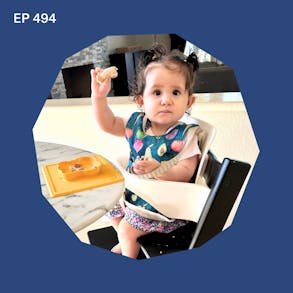

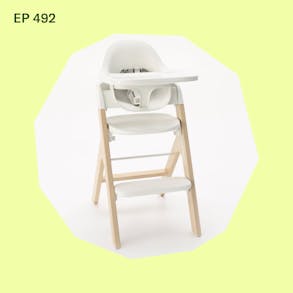
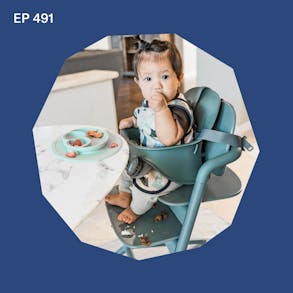
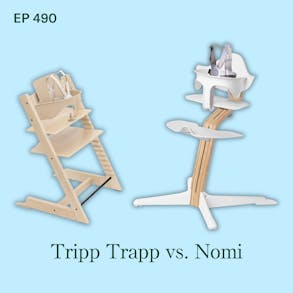
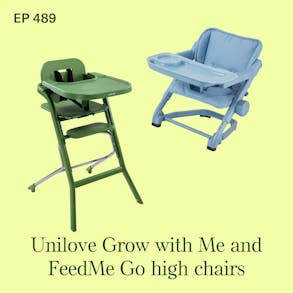
Katie Ferraro (1s):
And so parents will ask me, like I heard in this Facebook group or I've read this blog that my baby shouldn't have green foods or they can't digest wheat. Is that true? And not only is it not true, but we actually know that the benefits of introducing wheat foods early and often far outweigh any potential risks. Hey there, I'm Katie Ferraro, Registered Dietitian, college nutrition professor, and mama of seven specializing in baby led weaning. Here on the Baby-Led Weaning Made Easy podcast I help you strip out all of the noise and nonsense about feeding, leaving you with the competence and knowledge you need to give your baby a safe start to solid foods using baby led weaning.
Katie Ferraro (44s):
Welcome back to another episode of the baby led weaning made easy podcast. I'm your host, Katie Ferraro. I'm a registered dietician and mom of seven specializing in baby led weaning. And today we're talking a little bit about allergies and in particular wheat. So wheat is one of the big eight allergenic foods. I'll explain what that means in a second, if you don't know, but today this episode is all about wheat and how to introduce your baby to this potentially allergenic food. So let's go ahead and dive in. As I do at the top of every episode, I want to share a real quick baby led weaning tip of the day.
Katie Ferraro (1m 24s):
My absolute favorite way to introduce wheat is to serve your baby pasta. Now, hang tight. I'm going to share with you how you do that, which types of pasta you want to do, what you want to avoid. And we're also going to talk a little bit today about why some of the concerns that you read or hear about, especially on certain blogs and different, less reputable sources will tell you to be scared of feeding your baby wheat. I am going to help you decipher why most of those concerns are totally bogus. And in the majority of cases, it's totally safe to feed your baby wheat. Not to mention the benefits of introducing this allergenic food earlier and often versus waiting and holding off the benefits far outweigh any potential risks.
Katie Ferraro (2m 9s):
So let's go ahead and get started talking a little bit about wheat and how you can introduce this potentially allergenic food to your baby. Now I mentioned the term, the big eight allergenic foods, and I know that that may be familiar to some of you guys, but if not, the big eight foods are the eight foods that account for about 90% of food allergy and we is one of them. So I'm doing different podcast episodes on each one of them giving you guys really quick, easy tips, takeaway messages for how you can do these allergenic foods for your baby. Starting at the time they're six months of age or older. It's safe to start your baby on solid foods. And if you're just getting started with solid foods and you want to learn more about baby led weaning, I have a free online workshop called baby led weaning for beginners.
Katie Ferraro (2m 53s):
It's all about how you can get your baby to eat 100 foods before turning one, without you having to spoonfeed purees or buy pouches. And I give everyone in that workshop, a copy of my 101st foods list. It does include the big eight allergenic foods, plus a whole bunch of other starchy foods. Many of which contain wheat that your baby can safely eat. Cause the key here with the prevention of allergenic foods is that we want to introduce these foods early and often. So you don't just do pasta once and call it a day. Or my baby ate wheat. I'll show you in that workshop, how you can actually get your baby to routinely be exposed to this potentially allergenic food. So if you go to the show notes for this episode, that's blwpodcast.com/29.
Katie Ferraro (3m 37s):
I will link up the registration page. If you want to take that free online workshop, I teach it a few times every week on there to answer questions that you may have, and everyone gets that a hundred first foods list. Again, you can sign up for the workshop at blwpodcast.com slash 29, but back to wheat. Now we is one of the big eight allergenic foods, but it's not one of the most common pediatric food allergies. Your baby could get a wheat allergy, but if we compare children with wheat allergy versus adults, it is more common in children versus adults. And most children who have a wheat allergy will outgrow it before adulthood. Approximately two thirds of children with wheat allergy will be outgrowing that by the time they're 12, but it is, wheat is the most common grain product in the United States.
Katie Ferraro (4m 25s):
And it's in obvious things, right? Like pasta and bread, but it's also in less obvious places like soy sauce. So if you ever, for example, like hosting a family and the child, or someone has a wheat allergy, a really great resource where you can go to get more information about wheat and all the different allergies is food allergy.org. That's the food allergy research and education website. Again, it's food allergy.org. And when you go there, you can click on the allergies and then you can click down to wheat and you can find all of the different ingredients that actually mean wheat, because you have to be educated about reading your food labels. If you do have a child with food allergies or in many cases, you might not personally have the child with food allergies, but if someone in your community does and you're preparing meals, you want to educated about where it is because wheat for example is one like, you know, we think about it as being in again, really common foods like bread or pasta, but it's in other things that you might not think of soy sauce, for example, serine, which is the artificial fake crab meat.
Katie Ferraro (5m 30s):
Okay. So there is a difference too It's important to point out between wheat allergy and celiac disease. Wheat allergy is an immune response to the protein in a food in this case, wheat and celiac disease, which sometimes people get confused with wheat allergy is an auto-immune disease, whereby gluten, which is the protein that's found in things like wheat and barley and rye It causes damage to the intestinal track. So sometimes parents say, well, my baby is allergic to wheat or my baby doesn't eat wheat. It's important to clarify and have diagnosis as to whether, well, is that a true wheat allergy or is it celiac disease? But regardless the baby are a person with that allergy or with celiac disease would at all times need to avoid wheat containing foods. But you don't know if your baby has a wheat allergy yet, right?
Katie Ferraro (6m 12s):
Or your baby's confirmed not to have a wheat allergy. What are the different ways that we can feed our babies wheat? Well, my absolute favorite way to introduce wheat to babies for baby led weaning is with pasta, right? Pasta is something. I mean, I don't even care if you're a terrible cook, right? I was talking to a mom the other day. Shee was like the allergenic foods freak me out except wheat. Like, I feel like I could boil pasta. And I was like, yes, you can boil pasta. If you can boil pasta, you can probably also fry eggs, that's another allergenic food. And if you can do that, you could probably open a tub of yogurt. That's how you can feed your baby milk. Like I will give you easy ways that you could introduce your baby to each of these allergenic foods. And I generally recommend doing about one allergenic food a week.
Katie Ferraro (6m 52s):
So I teach a five-step feeding framework as part of my hundred first foods approach to starting solid foods with baby led weaning. And I say in a week, you want to introduce your baby who is six months of age, plus showing the other signs of readiness to feed, do five new foods a week, a new fruit, a new vegetable, a new starchy food, a new protein. And then on Friday, the fifth day, I always do a challenge category food. And the challenge category includes the eight allergenic foods. Plus some trickier textures and more complex flavor profiles. But you can do one allergenic food per week starting the first week that you feed your baby solid foods using baby led weaning. So I usually recommend starting with the three most common pediatric food allergens, that's egg, peanut, and milk.
Katie Ferraro (7m 33s):
But after that, we on week four is a great food to do on Friday of the fourth week. And I say Friday, because you do not need to wait three to five days between introducing low-risk foods like fruits and vegetables and other starchy foods. But wheat for example is an allergenic food. That's on a Friday. The challenge category. I feed it in the morning, do wheat food again later in the afternoon on Friday, once or twice on Saturday, once or twice on Sunday. Boom, no other new foods over the weekend. You're trying wheat early and often you're observing for any potential reactions. Your baby doesn't have a reaction Monday, go right back to introducing another low risk food like a fruit and keep that cycle going again. If you want to learn more about this five-step feeding framework, sign up for my free online workshop.
Katie Ferraro (8m 16s):
If you go to the show notes for this episode, BLW podcast.com/ 29, the sign up link is there. So when it comes to pasta, okay, with baby led weaning, we want to offer the baby longer pieces of pasta. So I like the ones that they can scoop up themselves because let's say you're doing wheat on week four of baby led weaning. We'll assume your baby's at the tail end of the six month of life we're going into the seven month of life. They generally don't have their pincer grasp by then. So the pincer grasp is required to pick up smaller pieces of food. Like let's say like orzo or a really small pasta. We don't want to offer that to babies who don't have their pincer grasp yet because they can't pick it up and feed it to themselves. So you can facilitate independent eating and self-feeding, if you offer longer strips of pasta, I like rotini, rigatoni, penne, cavatappi.
Katie Ferraro (9m 3s):
You do not have to do whole wheat pasta. If you do eat whole wheat pasta in your family and you have it, that's fine. But even, you know, good old fashioned white pasta. I don't normally recommend a lot of white carbs, but it's enriched with iron. It's a food. Most people can get a hold of. It's something that even the least inclined or least able to people and parents out there can actually boil pasta. So go with white if that's what works for you. Some places to get other wheat containing products. Baby led weaning. I love the website. Bob's red mill. I love the whole grain council as a place to get good recipes containing wheat foods. Again, link up all of these resources on the show notes page for this episode, which is BLWpodcast.com/ 29.
Katie Ferraro (9m 45s):
So a few tips about choosing wheat foods for your baby is you do want to look for whole grain when possible? Of course, it's fine to feed some white pasta here and there. It's not the end of the world. If your baby eat some white carbs. Okay. For me the first time I introduced pasta, I want to go for wheat rather. I want to go with something really clean and easy. If you look at the ingredient list of pasta it's flour and water, okay. They also, the pasta products oftentimes enriched. So there'd be a little extra iron added in there, which is great. They have a little bit of protein. Pasta actually has a significant amount of protein for a carbohydrate food, but there's some fiber in there. But as with all the foods that you're looking for with baby led weaning, you want to avoid sodium and added sugar. When you can try to choose wheat foods that the rest of your family eats or that your culture eats don't go by in wackadoodle foods that you're never going to eat again, because the point of baby led weaning is to incorporate foods that the rest of the family eats with our goal being by the time your baby turns one, he or she is eating modified versions of the same table foods that the rest of the family eats.
Katie Ferraro (10m 46s):
So again, if you want to grab my list of a hundred first foods that has 20 different starchy foods, many of which contain wheat that your baby can safely eat with baby led weaning that's in the a hundred first foods list, which all people on the workshop that I teach each week, get a copy of, again, the sign up for that is that BMW podcast.com/ 29. So before we close it out, I want to just address real quickly a question I get increasingly from parents who read blogs or hear from other Facebook groups, or sometimes not so reliable sources of information that babies can't eat wheat. I shouldn't feed my baby grain or I shouldn't feed my baby wheat. Is that true? That is bogus. Your baby can digest all starchy foods, including wheat.
Katie Ferraro (11m 30s):
Now there's some starchy foods and certain really big carbohydrates that are harder for babies to eat. That's a conversation for a different time. But as far as the proteins, the molecules, the compounds that we find in foods, pasta, your baby can totally do that at six months of age or later. And I like to remind parents and caregivers that the American academy of pediatrics reminds us that your infant's gastrointestinal tract is able to digest and efficiently absorbed virtually all nutrients by two to three months of age. So therefore it follows that by the time that we start complimentary feeding, there's no foods or food groups that we need to avoid on the basis of thinking that our baby's guts or their GI tracts are too immature.
Katie Ferraro (12m 11s):
Now, of course we don't feed babies at two to three months. And I talked about this in the previous podcast episode, number 28, which was all about constipation. Sometimes parents will like see corn or parts of other food in their baby's stool and be like, oh my gosh, they can't digest it. Know your baby's gut is learning how to work and process these different nutrients and foods. You're going to see a little bit of food remnant in there. It doesn't mean there's, that's an indicator of any sorts that your baby can absorb food. Same thing goes with starch. Your baby does have all of the appropriate enzymes and the digestive capacity and the muscular strength to handle carbohydrate-containing foods like wheat and pasta. Now, there are two instances of babies who do need to avoid wheat. Those who are diagnosed with a wheat allergy and those who have celiac disease, it's important not to self diagnose things like oh, food allergy or celiac disease as your own self-diagnosis is dangerous in the sense that it can lead to unnecessary restriction of certain foods or which can in turn lead to inadequate nutrition, especially in children.
Katie Ferraro (13m 9s):
So if you do suspect a food allergy, it is important that you consult with your pediatrician and then get tested in order to confirm whether or not that truly exists. So there you have it just a couple of quick tips about how to introduce wheat to your baby. It's a potentially allergenic food. I'll link up all of the resources from this episode on the show notes page, which is at blwpodcast.com slash 29. Thanks for being here. Bye now!
Get baby-led weaning recipes and tips delivered right to your email inbox.